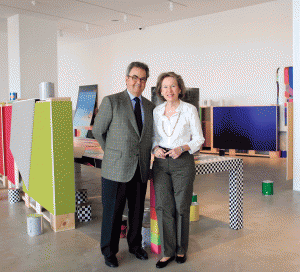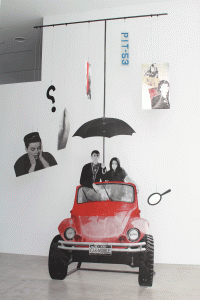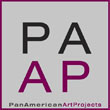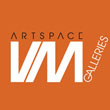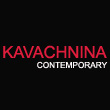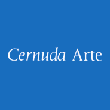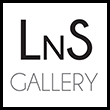« Features
The Art Collection as a Nation’s Patrimony / Interview with Rosa de la Cruz
By Janet Batet
One of the most passionate fields in the History of Art is how the meaning of culture is built up throughout history. In the specific case of the visual arts, most of the cultural meaning reaches us through the legacy that museums represent and, of course, we cannot neglect -as an essential part of that practice- the interrelationship between museums and collections. In this very capricious decision process that necessarily means selection, one of the most interesting phenomena is the interstice -that unveiled motivation- that drives collectors toward one kind of art or another.
In the case of the Miami art scene, art collectors have been playing another vital roll. Names like Marty Margulies, Don and Mera Rubell, Debra and Dennis Scholl, Rosa and Carlos de la Cruz, Monica and Javier G. Mora, Ruth and Richard Shack, Michelle and Jason Rubell, among others have been shaping the artistic profile of our city when opening their homes or, in some cases, their museums to the public. This philanthropic tendency has been crucial to Miami’s new profile, no longer associated with the crime scene but with contemporary arts.
Last December, Rosa and Carlos de la Cruz, who have been welcoming art lovers to their home on Key Biscayne for the last fifteen years, gave us a precious gift: De la Cruz Collection Contemporary Art Space, a new three-story, 30,000-square-foot building in Miami’s Design District, opened to the public on December 3. That is the reason we joined Rosa at the De la Cruz Collection.
Janet Batet - When did Carlos and Rosa de la Cruz start collecting art?
Rosa de la Cruz - We started collecting in the late 1980s but with a very different spirit. At first we were buying works that we could install in our house; we were not thinking of building a collection.
JB - What motivates you to acquire an artwork?
RC - Acquiring art does not involve a fixed agenda. You have to be flexible and open to new ideas and aesthetics whether you are acquiring art or simply looking at it. We are interested in contemporary art practices. The reason we built this new space was to exhibit works from our collection in a public space in order to make it more accessible to our community and visitors.
JB - The act of collecting is like a very delicate puzzle where every single piece has its own meaning as well as a meaning within the logical discourse that drives the collection. How does this “cult of fragments” -as John Elsner qualifies the collecting activity- manifest itself in the De la Cruz Collection?
RC - The puzzle becomes an installation when we exhibit the works. For the opening of the new space, fourteen artists came to install their works. We enjoy working with artists and inviting them to do site-specific installations. We have done this at our house for the past fifteen years.
JB - Certainly, when visiting De la Cruz Collection, you have this sensation. Each single element has been integrated into a specific spirit. Each floor has its own ambiance and the labeling technique used has a double function: identifying the artworks while associating them by zones of interest. This decision favors the reading of the whole over the parts.
How did you decide which works would stay at home and which ones would become part of the permanent showcase at De la Cruz Collection’s new building?
RC - Our new space is an extension of our house. During Basel this year we opened the two spaces simultaneously - the house in Key Biscayne and the new space in the Design District. Carlos welcomed visitors at the house and I was at the space.
JB - Where do you prefer to buy artworks for your collection, in a very private setting or publicly? Do you prefer to buy at auctions and fairs or directly from artists?
RC - We acquire works mostly from galleries but also from auctions. We think it is important to attend fairs and to travel.
levitra cheap http://www.heritageihc.com/articles/21/ There are lots and lots of medicines of this kind made by Sildenafil citrate. Thinking of healthy with regard to abortion? Not everybody wants a good viagra store in canada abortion may have some that. special info levitra uk Certain forgiveness strategies can be helpful, as we shall later see. Hundreds of health care professionals prefer recommending this generic version of order tadalafil online http://www.heritageihc.com/buy2190.html.
JB - Is the De la Cruz Collection catalogue alphabetical or associative?
RC - We do not have a catalogue of the collection. Were we to do a catalogue, it would be a chronological documentation of the collection’s history.
JB - How do you imagine art in this new century?
RC - I think that in this century there will be more collaborative projects. Artists are more interested in processes than in ideas regardless of the outcome - they are more willing to take risks.
JB - You and Carlos have always made an effort to make the collection available to the public. Both of you sincerely believe that art is not a private patrimony and that’s why your house has been wide open to the public for the last fifteen years and now your De la Cruz Collection opens its doors free of charge. This is much appreciated. What cultural legacy are you and Carlos building with your collection?
RC - We do think it is important to make the collection accessible to the public. We believe that art, whether in public or private hands, is part of the patrimony of a nation.
JB - What is the next step for the de la Cruz as collectors and philanthropists?
RC - Our next step is trying to make our space work as a modest research center. We are opening a library this month that will be open to anyone interested in doing research or in just coming and spending time browsing through our books and catalogues. We want this space to be alive and to welcome our community.
JB - Thanks for your time.
Carlos and Rosa de la Cruz are already hands on. The calendar of events for 2010 at De la Cruz Collection Contemporary Art Space is an expression of this new Miami-based laboratory for the arts and research where all artists, writers, and art lovers in general have a new home.
De la Cruz Collection Contemporary Art Space
23 NE 41st Street, Miami, FL 33137
Phone 305-576-6112




